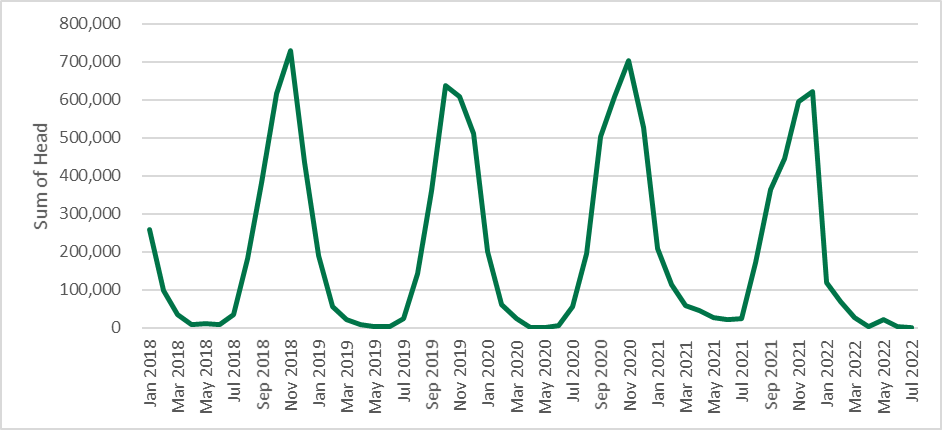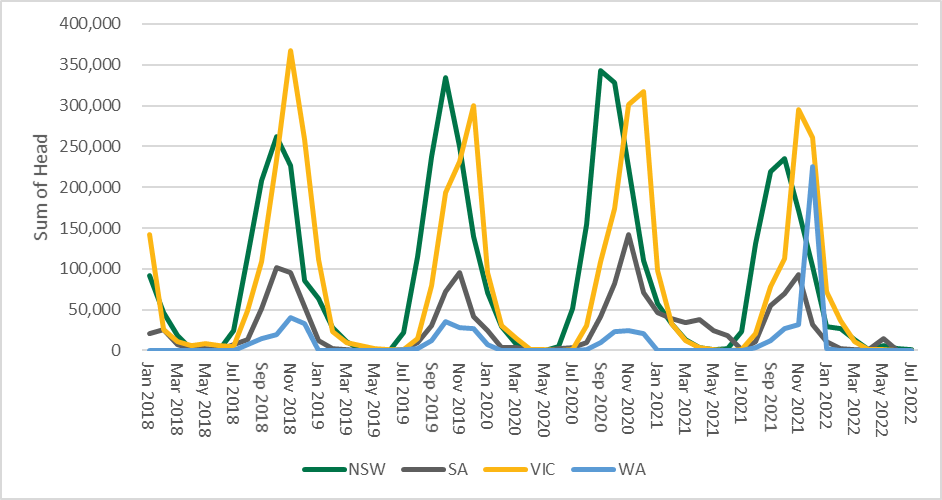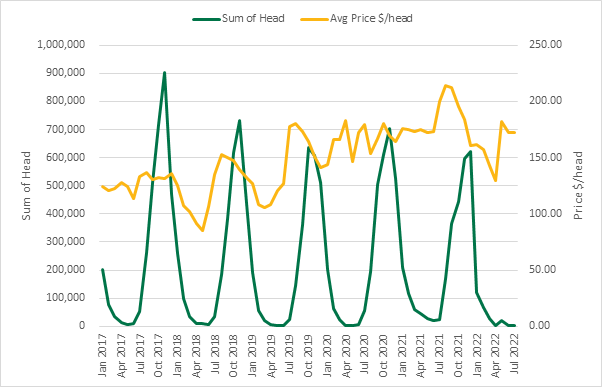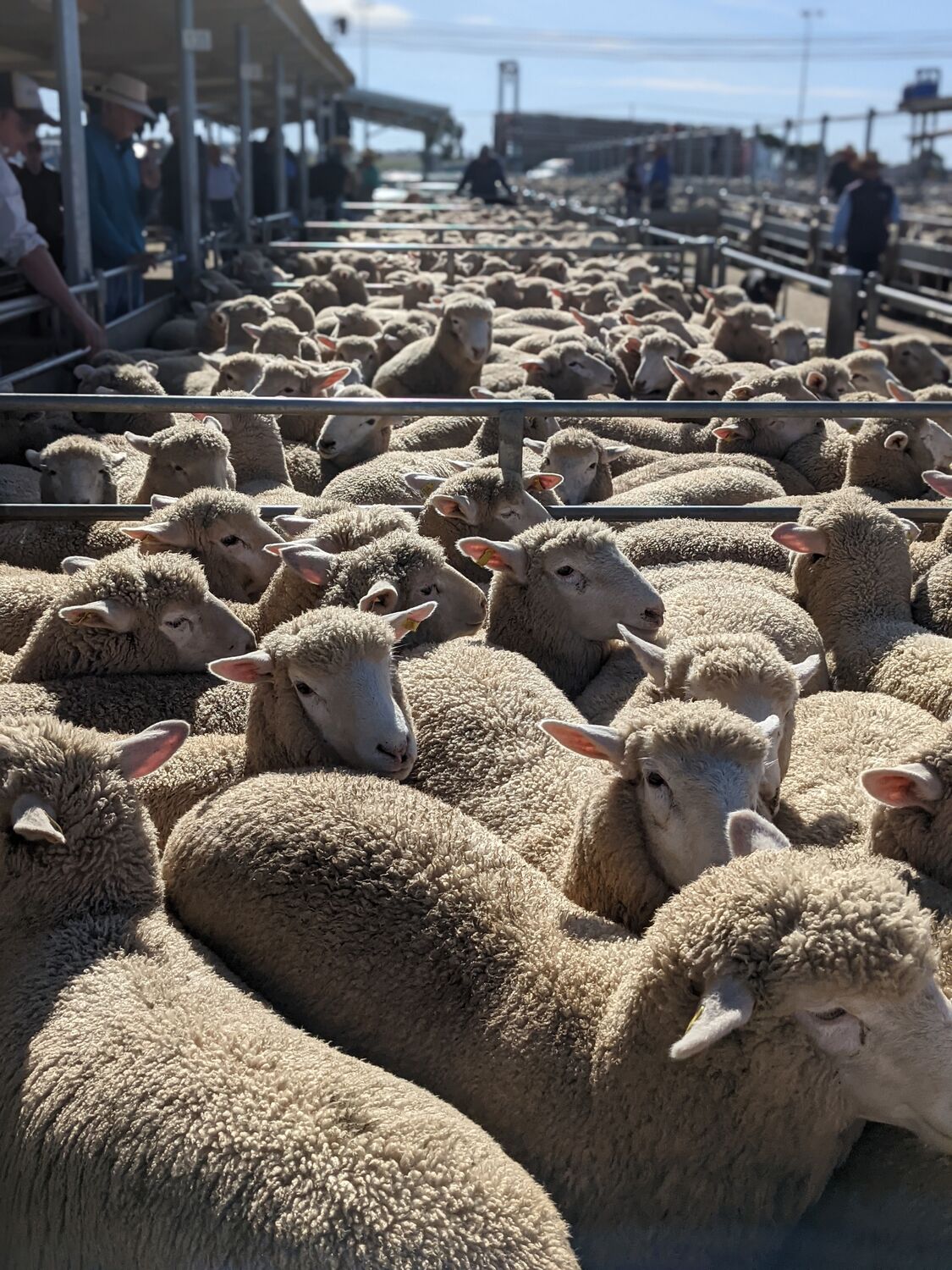Courtesy of Meat & Livestock Australia
- Volumes of young lambs increase from July.
- Historically, young lamb prices trade at elevated levels between July and late August before supply increases.
- NSW’s peak young lamb saleyard throughput occurs in mid to late spring – a month earlier than Victoria’s peak.
Sheep and lamb yardings follow seasonal patterns that come after yearly joining, lambing and shearing.
These patterns are the same within each state but vary from state to state. The patterns can be seen in most categories of sheep and lamb yardings as well as in slaughter – although the general winter dip in lamb slaughter rates has not been as severe this season as processors work through a backlog of supply and issues around COVID-19.
Young lamb yardings explained
The graph below shows national young lamb yardings from the past five years.
As can be seen in the graph, the supply of young lambs follows a seasonal pattern, hitting the market around July each year after lambing in May. The supply then hits a peak around November where the majority of the lambs move through the yards, before softening sharply until July comes around again.

NSW throughput
On 23 June this year, NSW had the highest daily saleyard throughput of any day since 2005. However, if recent history is to go by, NSW lamb yardings will ease from September.
Since 2015, peak lamb saleyard throughput in NSW has typically occurred between June and mid-August. This is in stark contrast to the early 2000s, when autumn was the peak period of saleyard throughput.
In July and August last year, as lamb throughput eased in NSW, the average per head price reached record highs, breaking $267/head on three separate occasions. In 2021 overall, NSW lamb and young lamb prices trumped 2020 levels on a per head basis as lambs were finished to higher weights.
NSW and Victorian prices move
For NSW, historically young lamb levels peak between late September and early November. However, based on historical trends, young lamb prices on a per head basis peak from mid-August through to late September.
Meanwhile in Victoria, young lamb numbers typically peak between mid-November to mid-December, with this trend having become especially apparent since 2016. Furthermore, more lambs (not young lambs) usually hit the market in Victoria in autumn rather than spring.
The peak prices paid in Victoria for young lambs tend to occur from the last week of July through until the end of August. However, in 2021, high young lamb prices were paid until early October.
For lambs (not young lambs) in Victoria, per head prices over the past five years have operated at their highest between late May and the end of July.
State-by-state supply shifts
When looking at the individual states we can see the supply shifts within key sheep producing areas.

The largest yarding in Victoria was recorded in November 2018, where 367,626 head were yarded. This was during the 2018–19 drought where producers were reducing their flock sizes and selling off their new season young lambs. During 2020 and 2021 – with the latest flock rebuild starting with favourable conditions – NSW overtook Victoria in yardings. However, overall, yardings have declined in the last few years as the flock rebuild matures.
Supply and the seasons
In the months between March and June, there are little to no young lambs on the market. By this point, producers have generally made decisions around how many they want to keep or sell off. When prices are charted against supply, the impacts of seasonal conditions can be seen.

When conditions are not favourable, as in 2018 and 2019, the average price per head eases with supply as producers look to destock. In good seasons, such as the current 2020–2022 rebuild phase, prices remain high in times of low supply. This is no surprise as producers chase young lambs that have good returns and contribute to the rebuild.
What’s next
The yardings of young lambs is expected to pick up in the coming months as the next glut appears following lambing season. The demand for these lambs will be determined by the strength of the rebuild and the continuation of the current favourable seasonal conditions moving into summer.
